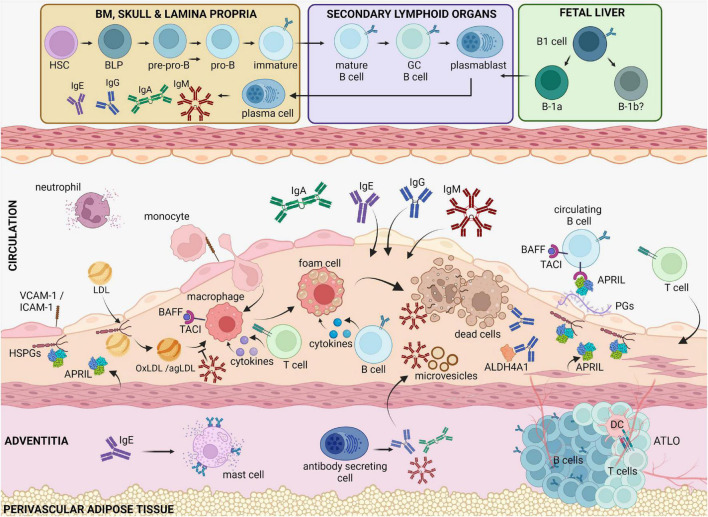FIGURE 1.
B cell functions in atherosclerotic disease. Circulating cholesterol-containing LDL particles are progressively retained in the subendothelial space of arteries. Oxidized or aggregated LDL particles are taken up by arterial macrophages, which turn to foam cells because of uncontrolled lipid uptake and thereby undergo apoptosis or necrosis. Antibody-producing cells that reside in the bone marrow, the spleen and in the adventitia, produce high amounts of antibodies that are deposited in the plaque. IgM is known to bind and block the proinflammatory effects of oxidized LDL, apoptotic cells and microvesicles. IgE antibodies by binding to FcεRI receptors activate powerful proinflammatory responses by mast cells and macrophages. IgG antibodies can also bind OxLDL as well as self-proteins, such as ALDH4A1, and modulate macrophage activation. BAFF and APRIL, which both bind the TACI receptor in B cells, dampen the proinflammatory responses by macrophages, and limit the LDL retention in the intima, respectively, thereby revealing an indirect property of B cells to regulate plaque inflammation. BLPs, B-cell-biased lymphoid progenitors; PGs, proteoglycans, TACI, Transmembrane activator and CAML interactor; BAFF, B cell activating factor; APRIL, A Proliferation Inducing Ligand, HSPGs, heparan sulfate proteoglycans; BM, bone marrow; ATLO, artery tertiary lymphoid organ; OxLDL, oxidized LDL; agLDL, aggregated LDL.

